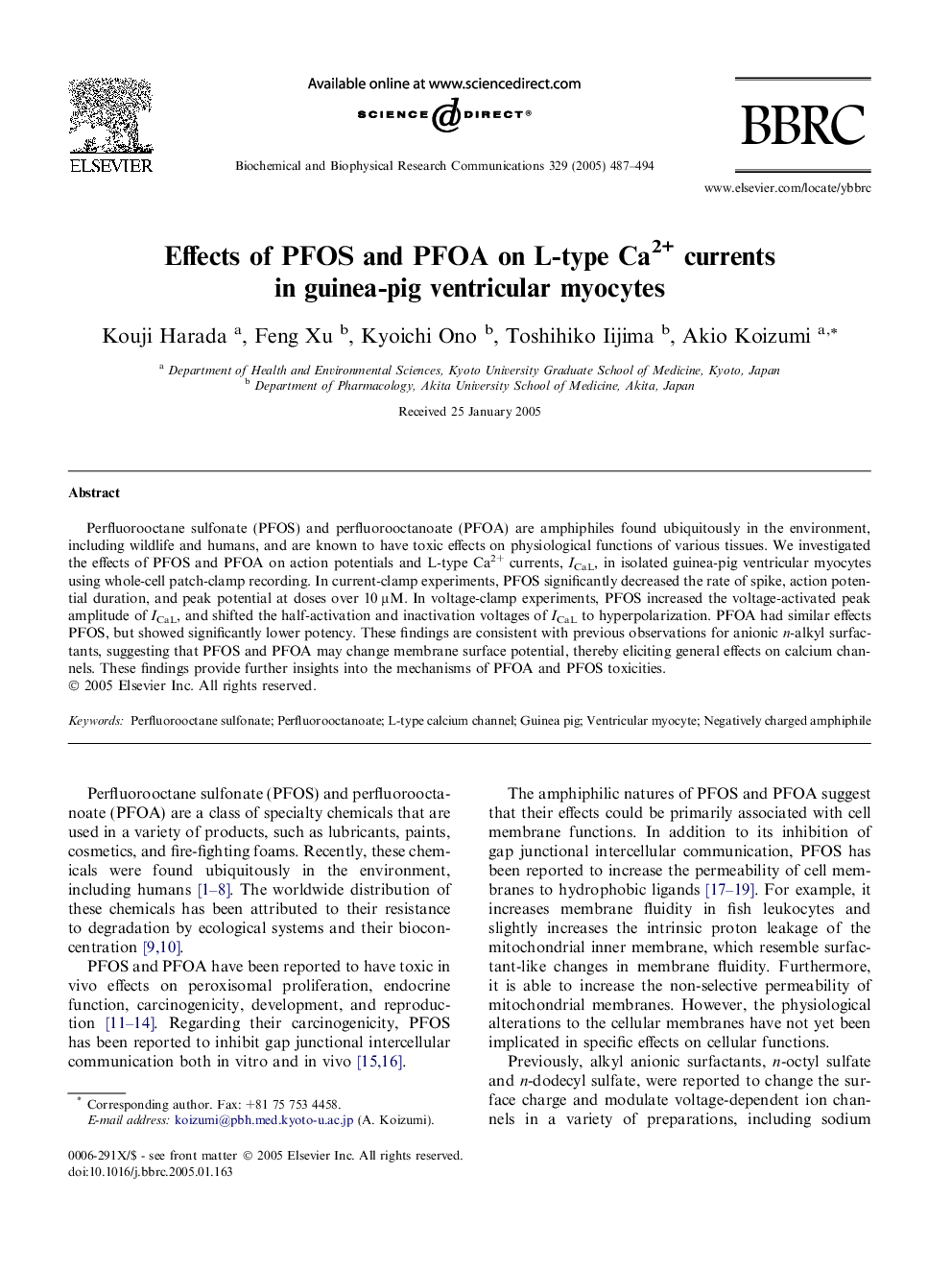| Article ID | Journal | Published Year | Pages | File Type |
|---|---|---|---|---|
| 10770707 | Biochemical and Biophysical Research Communications | 2005 | 8 Pages |
Abstract
Perfluorooctane sulfonate (PFOS) and perfluorooctanoate (PFOA) are amphiphiles found ubiquitously in the environment, including wildlife and humans, and are known to have toxic effects on physiological functions of various tissues. We investigated the effects of PFOS and PFOA on action potentials and L-type Ca2+ currents, ICaL, in isolated guinea-pig ventricular myocytes using whole-cell patch-clamp recording. In current-clamp experiments, PFOS significantly decreased the rate of spike, action potential duration, and peak potential at doses over 10 μM. In voltage-clamp experiments, PFOS increased the voltage-activated peak amplitude of ICaL, and shifted the half-activation and inactivation voltages of ICaL to hyperpolarization. PFOA had similar effects PFOS, but showed significantly lower potency. These findings are consistent with previous observations for anionic n-alkyl surfactants, suggesting that PFOS and PFOA may change membrane surface potential, thereby eliciting general effects on calcium channels. These findings provide further insights into the mechanisms of PFOA and PFOS toxicities.
Keywords
Related Topics
Life Sciences
Biochemistry, Genetics and Molecular Biology
Biochemistry
Authors
Kouji Harada, Feng Xu, Kyoichi Ono, Toshihiko Iijima, Akio Koizumi,
